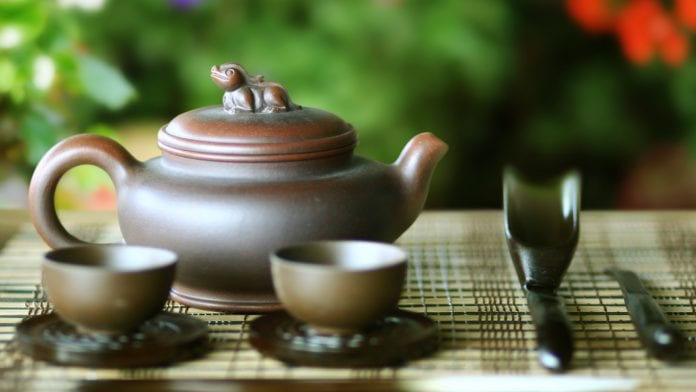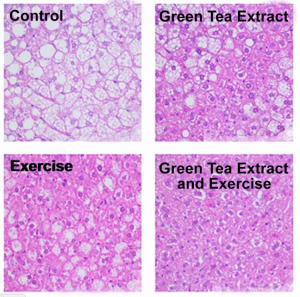
Early in-vivo research suggests that a combination of green tea and exercise can reduce the severity of fatty liver disease by 75%
Researchers from Penn State University have revealed that the combination of green tea extract and exercise reduced the severity of obesity-related fatty liver disease by 75% in mice fed a high-fat diet, which means this research may point to a potential health strategy for people.
Joshua Lambert, associate professor of food science, explains how this outcome is important because nonalcoholic fatty liver disease is a significant global health problem that is expected to worsen.
The high prevalence of risk factors such as obesity and type 2 diabetes means that fatty liver disease is forecast to afflict more than 100 million people by 2030. And there are currently no validated therapies for the disease.
Measuring the protein and fat excretion
In the study, mice fed a high-fat diet for 16 weeks that consumed green tea extract and exercised regularly by running on a wheel were found to have just a quarter of the lipid deposits in their livers compared to those seen in the livers of a control group of mice.
Mice that were treated with green tea extract alone or exercise alone had roughly half as much fat in their livers as the control group.
The research published recently in the Journal of Nutritional Biochemistry, not only analysed the liver tissue in mice but researchers also measured the protein and fat content in their faeces. They found that the mice that consumed green tea extract and exercised had higher faecal lipid and protein levels.
Handling food differently due to green tea consumption
Lambert said: “By examining the livers of these mice after the study concluded and by screening their faeces during the research, we saw that the mice that consumed green tea extract and exercised actually were processing nutrients differently and their bodies were handling food differently.
“We think the polyphenols in green tea interact with digestive enzymes secreted in the small intestine and partially inhibit the breakdown of carbohydrates, fat and protein in food,
“So, if a mouse doesn’t digest the fat in its diet, that fat and the calories associated with it pass through the mouse’s digestive system, and a certain amount of it ends up coming out in its faeces.”

Gene expression
Lambert explained that it may be significant that mice treated with both green tea extract and exercise had higher expression of genes related to the formation of new mitochondria. Gene expression is important because it provides markers that will help researchers understand the mechanism by which green tea polyphenols and exercise might work together to mitigate fatty liver deposits.
Lambert explained: “We measured the expression of genes that we know are related to energy metabolism and play an important role in energy utilization.
“In the mice that had the combination treatment, we saw an increase in the expression of genes that weren’t there before they consumed green tea extract and exercised.”
More research is needed
Lambert pointed out that more research is needed to see if there is a synergy created by green tea extract and exercise working together to reduce fat deposited in the liver, or if the effects are simply additive.
For 12 years, Lamberts research group in the College of Agricultural Sciences has studied the health benefits of polyphenols (often called antioxidants) from green tea, cocoa, avocados and other sources.
In previous related research, Lambert and colleagues demonstrated that green tea extract and exercise together sharply reduced body mass and improved cardiovascular health of high-fat-fed mice. However, because no human trials assessing the health benefits and risks of green tea combined with exercise have been conducted, he urges caution for people who decide to experiment with the health strategy on their own.
Lambert concluded: “I believe people should engage in more physical activity, and replacing high-calorie beverages with decaffeinated, diet green tea – which has no calories – is a smart move. Combining the two might have health benefits for people, but we don’t have the clinical data yet.”






















